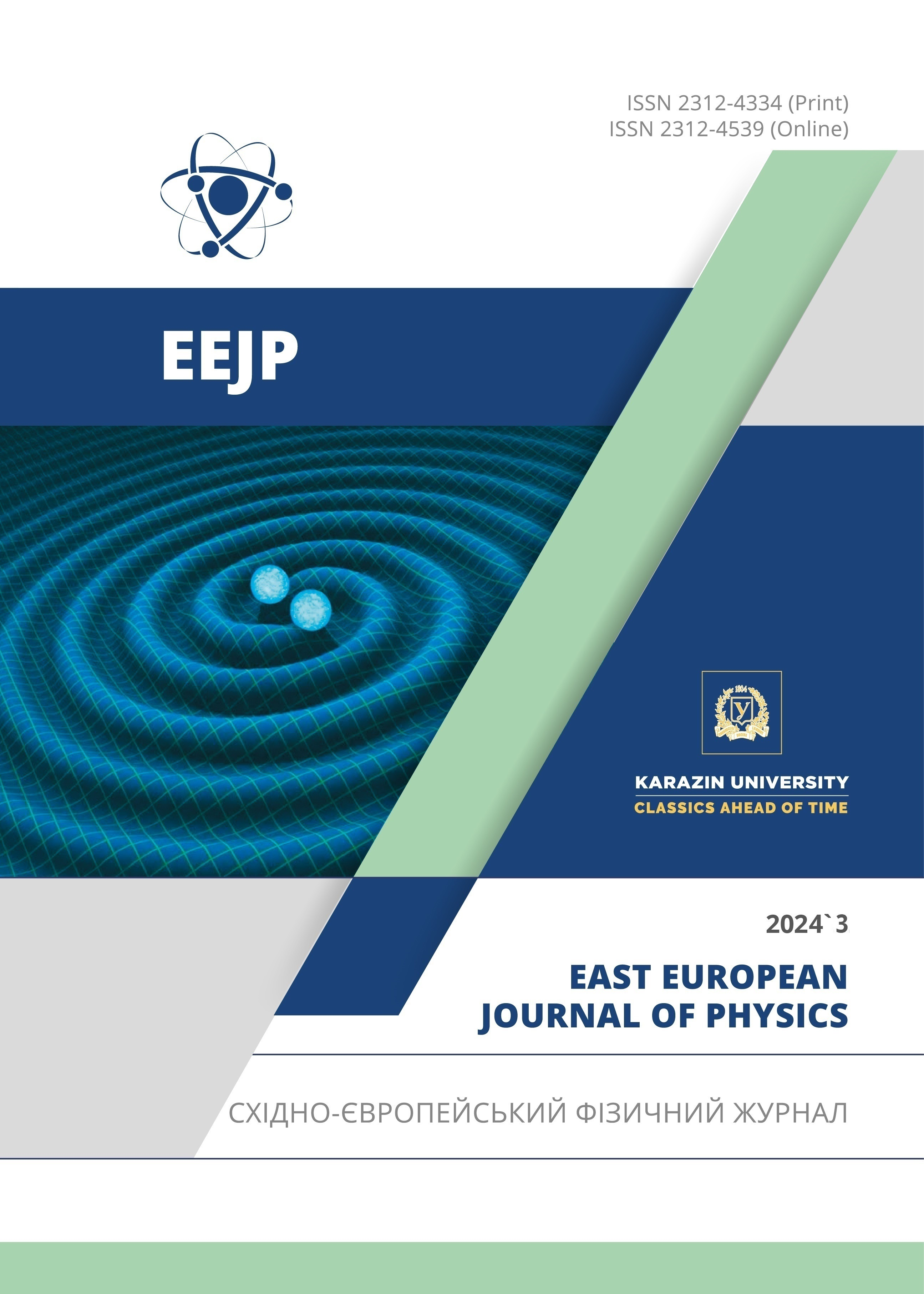The Low-Temperature Growth of Carbon Nanotubes Using Nickel Catalyst
Abstract
This study presents the results of a comprehensive investigation into the fabrication of single-walled carbon nanotubes (SWCNTs) employing chemical vapor deposition (CVD) technique, with nickel nanoparticles serving as crucial catalysts. These nanoparticles are synthesized via the reduction of oxide precursors using hydrogen and are strategically incorporated with ethanol vapor as the primary carbon source. The effectiveness and reproducibility of this synthesis method are thoroughly validated using advanced analytical techniques. Particularly noteworthy is the demonstrated ability to conduct the process at relatively low temperatures, not exceeding 500°C, which is of significant importance. Such precise control over synthesis conditions not only augurs well for the scalability of SWCNT production but also carries substantial implications for the advancement of nanomaterial synthesis methodologies.
Downloads
References
N. Gupta, S. M. Gupta, and S. K. Sharma, Carbon Letters. 29, 419 (2019). https://doi.org/10.1007/s42823-019-00068-2.
I. Ashurov, S. Iskandarov, U. Khalilov, and Kh. Ashurov, Applied Solar Energy, 58(3), 334 (2022). https://doi.org/10.3103/S0003701X22030033
V.M. Rotshteyn, T.K. Turdaliev, and Kh.B. Ashurov, Applied Solar Energy, 57(6), 480 (2021). https://doi.org/10.3103/S0003701X21060153
K. Cui, J. Chang, L. Feo, C. L. Chow, and D. Lau, Frontiers in Materials, 9, 861646, (2022). https://doi.org/10.3389/fmats.2022.861646
L. Sun, X. Wang, Y. Wang, and Q. Zhang, Carbon, 122, 462-474, (2017). https://doi.org/10.1016/j.carbon.2017.07.006
B.O. Murjani, P.S. Kadu, M. Bansod, S.S. Vaidya, and M.D. Yadav, Carbon Letters, 32(5), 1207 (2022). https://doi.org/10.1007/s42823-022-00364-4
S. Vollebregt, S. Banerjee, F.D. Tichelaar, and R. Ishihara, Microelectronic Engineering, 156, 126 (2016). https://doi.org/10.1016/j.mee.2016.01.034
M. Tehrani, and P. Khanbolouki, Advances in Nanomaterials, 3-35, (2018). https://doi.org/10.1007/978-3-319-64717-3_1
S. Iijima, Nature. 354, 56 (1991). https://doi.org/10.1038/354056a0
V. Sivamaran, V. Balasubramanian, M. Gopalakrishnan, V. Viswabaskaran, A. Gourav Rao, and S. Selvamani, Nanomaterials and Nanotechnology, 12, 1 (2022). https://doi.org/10.1177/18479804221079495
J. Gao, J. Zhong, L. Bai, J. Liu, G. Zhao, and X. Sun, Scientific reports, 4(1), 3606 (2014). https://doi.org/10.1038/srep03606
A.R. Karaeva, S.A. Urvanov, N.V. Kazennov, E.B. Mitberg, and V.Z. Mordkovich, Nanomaterials, 10(11), 2279 (2020). https://doi.org/10.3390/nano10112279
T. Thurakitseree, and C. Pakpum, Applied Mechanics and Materials, 891, 195 (2019). https://doi.org/10.4028/www.scientific.net/AMM.891.19.
L. He, G. Liao, S. Hu, L. Jiang, H. Han, H. Li, and J. Xiang, Fuel, 264, 116749 (2020). https://doi.org/10.1016/j.fuel.2019.116749
R. Das, S. Bee Abd Hamid, M. Eaqub Ali, S. Ramakrishna, and W. Yongzhi, Current Nanoscience, 11(1), 23 (2015). https://doi.org/10.2174/1573413710666140818210043
M.S. Dresselhaus, A. Jorio and R. Saito, Annu. Rev. Condens. Matter Phys. 1(1), 89- (2010). https://doi.org/10.1146/annurev-conmatphys-070909-103919
A.F. Ismail, P.S. Goh, J.C. Tee, S.M. Sanip, and M. Aziz, Nano, 3(03), 127 (2008). https://doi.org/10.1142/S1793292008000927
D.P. Roe, R. Xu, and C.B. Roberts, Applied Catalysis A: General, 543, 141 (2017). https://doi.org/10.1016/j.apcata.2017.06.020
Copyright (c) 2024 Ilyos J. Abdisaidov, Sevara G. Gulomjanova, Ilyos Kh. Khudaykulov, Khatam B. Ashurov

This work is licensed under a Creative Commons Attribution 4.0 International License.
Authors who publish with this journal agree to the following terms:
- Authors retain copyright and grant the journal right of first publication with the work simultaneously licensed under a Creative Commons Attribution License that allows others to share the work with an acknowledgment of the work's authorship and initial publication in this journal.
- Authors are able to enter into separate, additional contractual arrangements for the non-exclusive distribution of the journal's published version of the work (e.g., post it to an institutional repository or publish it in a book), with an acknowledgment of its initial publication in this journal.
- Authors are permitted and encouraged to post their work online (e.g., in institutional repositories or on their website) prior to and during the submission process, as it can lead to productive exchanges, as well as earlier and greater citation of published work (See The Effect of Open Access).








